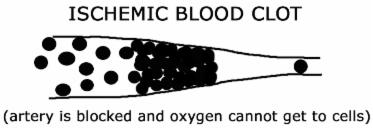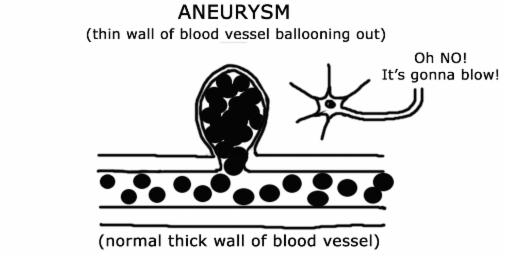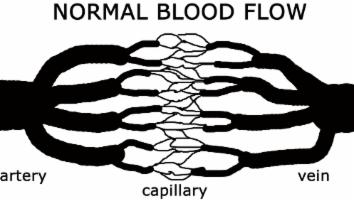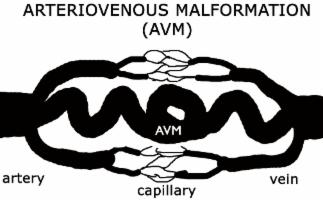Warning Signs of Stroke
Dr. Jill created this mnemonic device in order to help people remember the most important signs of stroke. Please commit these to memory and share them with everyone you know!
S = Speech, or problems with language
T = Tingling, or numbness in your bodyR = Remember, or problems with thinking
O = Off-balance, or problems with coordination
K = Killer headache
E = Eyes, or problems with vision
Stroke is a medical emergency. Dial 911.
About Strokes
Stroke is the number one disabler in our society and the number three killer. According to the American Stroke Association, the ischemic stroke accounts for approximately 83% of all strokes. Arteries carry blood into the brain and their shape tapers smaller and smaller as they travel farther away from the heart. These arteries carry life-supporting oxygen necessary for cells to survive. With ischemic stroke, a blood clot travels into the artery until the tapered diameter of the artery becomes too small for the clot to pass any farther. The blood clot blocks the flow of oxygen-rich blood to the cells beyond the point of obstruction. Consequently, brain cells become traumatized and often die.

Hemorrhagic strokes occur when blood escapes from the arteries and floods into the brain. 17% of all strokes are hemmorhagic. Blood is toxic to neurons when in direct contact, so any leak or vascular tear can have devastating effects on the brain. One form of stroke, the aneurysm, forms when there is a weakening in the wall of a blood vessel that consequently balloons out. The weakened area fills with blood and can readily rupture, spewing large volumes of blood into the skull. Any type of hemorrhage is often life-threatening.

An arteriovenous malformation (AVM) is a rare form of hemorrhagic stroke. It is a congenital disorder whereby an individual is born with an abnormal arterial configuration. Normally, the heart pumps blood through arteries with high pressure, while blood is retrieved through veins, which are low pressure. A capillary bed acts as a buffering system, or neutral zone, between the high-pressure arteries and the low-pressure veins. In the case of the AVM, an artery is directly connected to a vein with no buffering capillary bed in between. Over time, the vein can no longer handle the high pressure from the artery and the connection between the artery and vein is broken, spilling blood into the brain. Although the AVM accounts for only 2% of all hemorrhagic strokes, it is the most common form of stroke that strikes people during their prime years of life (ages 25-45). Dr. Jill was 37 when her AVM blew.



Hemorrhagic strokes occur when blood escapes from the arteries and floods into the brain. 17% of all strokes are hemmorhagic. Blood is toxic to neurons when in direct contact, so any leak or vascular tear can have devastating effects on the brain. One form of stroke, the aneurysm, forms when there is a weakening in the wall of a blood vessel that consequently balloons out. The weakened area fills with blood and can readily rupture, spewing large volumes of blood into the skull. Any type of hemorrhage is often life-threatening.

An arteriovenous malformation (AVM) is a rare form of hemorrhagic stroke. It is a congenital disorder whereby an individual is born with an abnormal arterial configuration. Normally, the heart pumps blood through arteries with high pressure, while blood is retrieved through veins, which are low pressure. A capillary bed acts as a buffering system, or neutral zone, between the high-pressure arteries and the low-pressure veins. In the case of the AVM, an artery is directly connected to a vein with no buffering capillary bed in between. Over time, the vein can no longer handle the high pressure from the artery and the connection between the artery and vein is broken, spilling blood into the brain. Although the AVM accounts for only 2% of all hemorrhagic strokes, it is the most common form of stroke that strikes people during their prime years of life (ages 25-45). Dr. Jill was 37 when her AVM blew.


Forty Things I Needed the Most
Ten Assessment Questions
Book Group/Exercise Questions
Hemispheric Asymmetries (Right and Left Brain Differences)
Dr. Jill's belief that the two hemispheres process information differently is based on centuries-old research. Learn more about this idea through the following sources.
Meinard Simon du Pui's De homine dextro et sinistro (1780): In it, he wrote that man is, from a medical point of view, a "homo duplex, a right man and a left one" (p. 108); "man's nervous system is just as bipartite as the rest of his body, with the result that one half of it may become affected while the other half continues to carry out its proper functions" (pp. 184-85). (G.J.C. Lokhorst. Hemisphere differences before 1800. Behavioral and Brain Sciences, 8 (4): 642, 1985. ISSN 0140-525X)
Arthur Ladbroke Wigan's The Duality of the Mind (1844): "If, for example, as I have so often stated, and now again repeat, one brain . . . be capable of all the emotion, sentiments, and faculties, which we call in the aggregate, mind--then it necessarily follows that man must have two minds with two brains..." (republished by Cambridge University Press in 1987; ISBN: 0521348285)
Roger W. Sperry's split brain experiments from the 1970s: "The same individual can be observed to employ consistently one or the other of two distinct forms of mental approach and strategy, much like two different people, depending on whether the left or right hemisphere is in use." (Sperry's Nobel Prize Address from 1981)
Andrew Newberg, Eugene d'Aquili, and Vince Rause's Why God Won't Go Away (2001): "The sensation that Buddhists call “oneness with the universe” and the Franciscans attribute to the palpable presence of God is not a delusion, or subjective psychology, or simple wishful thinking. The inescapable conclusion is that God seems to be hard-wired into the human brain." (Why God Won't Go Away: Brain Science and the Biology of Belief)
We are, I am, the life force power of the universe!
We are, I am, the life force power of 50 trillion molecular geniuses!
We are, I am, the life force power of 50 trillion molecular geniuses!
There's a party going on inside of me!
Meinard Simon du Pui's De homine dextro et sinistro (1780): In it, he wrote that man is, from a medical point of view, a "homo duplex, a right man and a left one" (p. 108); "man's nervous system is just as bipartite as the rest of his body, with the result that one half of it may become affected while the other half continues to carry out its proper functions" (pp. 184-85). (G.J.C. Lokhorst. Hemisphere differences before 1800. Behavioral and Brain Sciences, 8 (4): 642, 1985. ISSN 0140-525X)
Arthur Ladbroke Wigan's The Duality of the Mind (1844): "If, for example, as I have so often stated, and now again repeat, one brain . . . be capable of all the emotion, sentiments, and faculties, which we call in the aggregate, mind--then it necessarily follows that man must have two minds with two brains..." (republished by Cambridge University Press in 1987; ISBN: 0521348285)
Roger W. Sperry's split brain experiments from the 1970s: "The same individual can be observed to employ consistently one or the other of two distinct forms of mental approach and strategy, much like two different people, depending on whether the left or right hemisphere is in use." (Sperry's Nobel Prize Address from 1981)
Andrew Newberg, Eugene d'Aquili, and Vince Rause's Why God Won't Go Away (2001): "The sensation that Buddhists call “oneness with the universe” and the Franciscans attribute to the palpable presence of God is not a delusion, or subjective psychology, or simple wishful thinking. The inescapable conclusion is that God seems to be hard-wired into the human brain." (Why God Won't Go Away: Brain Science and the Biology of Belief)
Dr. Jill's Healing Rap!
We are, I am, the life force power of the universe!We are, I am, the life force power of the universe!
We are, I am, the life force power of 50 trillion molecular geniuses!
We are, I am, the life force power of 50 trillion molecular geniuses!
There's a party going on inside of me!